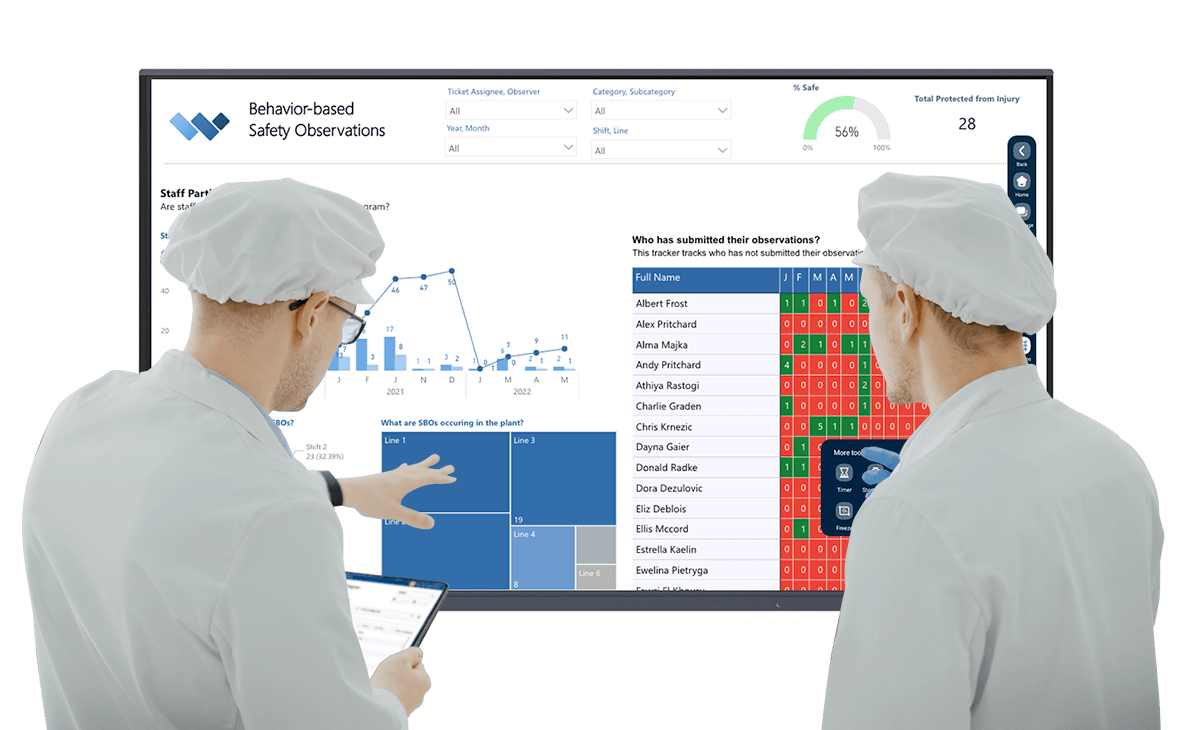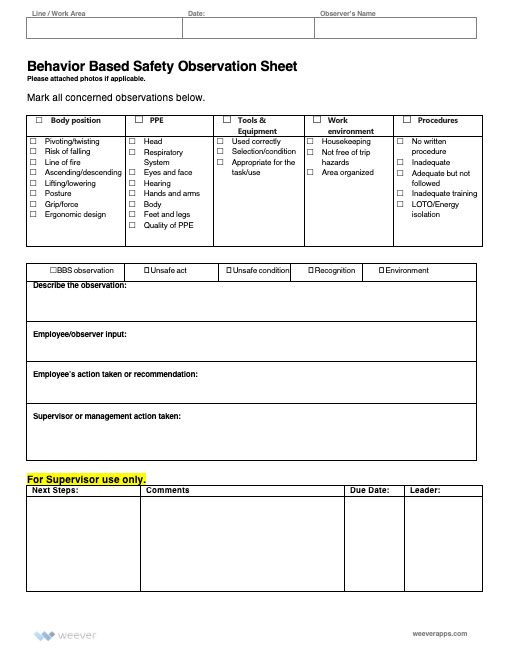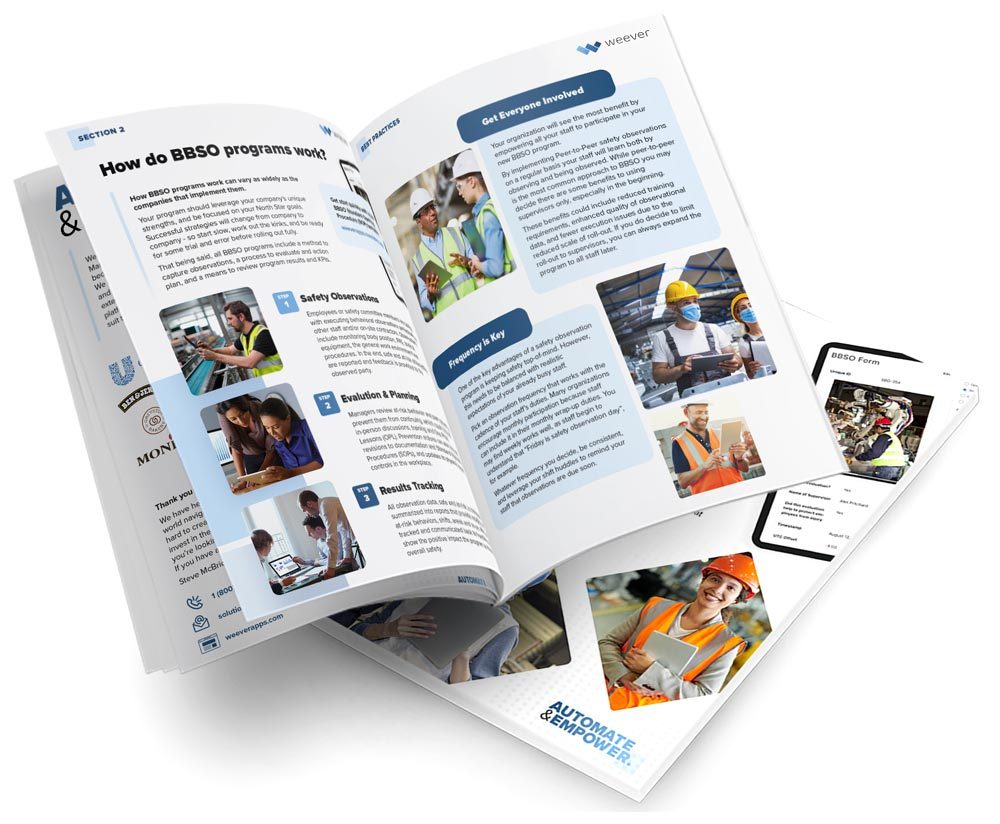What is Behavior-Based Safety and how does it work?
Ultimate Guide to the World of Behavior-Based Safety Observations (BBSO).

Ever wondered how to turn your workplace into a safety powerhouse while keeping things friendly and fun? Look no further than Behavior-Based Safety Observations (BBSO). It's not just another safety acronym-it's a proactive, people-centered approach that can transform the safety culture of any organization.
At its core, BBS is about fostering a culture where safety isn't just a priority-it's a way of life. By focusing on the behaviors of individuals and their consequences, BBS helps identify and eliminate risks before they turn into accidents.
But it's not just about ticking boxes and following rules; it's about building trust, collaboration, and accountability between leaders and employees.
What are Behavior-Based Safety Observations?
At its essence, Behavior-Based Safety is a systematic approach that focuses on observable behaviors to prevent accidents and promote a culture of safety.
Instead of merely reacting to incidents, BBSO programs seek to identify and address the root causes of unsafe actions before they lead to harm.
In BBSO, trained observers conduct regular observations of workers as they perform their tasks, focusing on identifying both safe and unsafe behaviors. These observations are typically guided by predefined checklists or criteria tailored to specific job tasks and safety concerns. Observers document their findings, noting instances of adherence to safety protocols as well as deviations or at-risk behaviors.
The primary goal of BBSO is to elevate safety culture within an organization by promoting awareness, accountability, and continuous improvement. By systematically evaluating worker behavior, BBSO provides meaningful insights into the underlying causes of safety incidents and near misses.
These insights allow organizations to implement targeted interventions and preventive measures to mitigate risks and prevent future incidents from occurring.
Key benefits of Behavior-Based Safety Observations include:
- Proactive Risk Identification: BBSO allows organizations to identify and address potential safety hazards and at-risk behaviors before they lead to accidents or injuries.
- Cultural Transformation: By engaging employees in safety observations and discussions, BBSO fosters a culture of safety awareness, accountability, and continuous improvement throughout the organization.
- Data-Driven Decision Making: The data collected through BBSO provides valuable insights into safety performance trends, enabling organizations to make informed decisions and prioritize interventions effectively.
- Employee Engagement: Involving frontline workers in safety observations empowers them to take ownership of safety and contribute to creating a safer work environment.
The ABC Methodology: Antecedent, Behavior, Consequence
Central to this approach is the ABC methodology-a structured framework for analyzing behavior and its consequences. Picture this: A worker in a manufacturing facility neglects to wear appropriate personal protective equipment (PPE) while operating machinery.
In the world of BBSO, this scenario unfolds through the lens of the ABC methodology:
Antecedent
- This component serves as the trigger or precursor to the observed behavior. It encompasses the situational factors or environmental cues that influence an individual's actions.
- Understanding these antecedents is crucial for identifying the root causes of unsafe behaviors and implementing targeted interventions.
Behavior
- The behavior component represents the action or conduct exhibited by the individual in response to the antecedent.
- By focusing on observable behaviors, BBSO practitioners gain valuable insights into the actions that contribute to workplace safety-or lack thereof.
Consequence
- As the name suggests, the consequence component encapsulates the outcomes or results that follow from the observed behavior.
- By understanding the consequences of unsafe actions, organizations can assess the severity of risks and prioritize interventions accordingly.
By dissecting behaviors into these three components, BBS practitioners gain valuable insights into the underlying causes of unsafe actions. Armed with this knowledge, organizations can implement targeted interventions to reinforce safe behaviors and eliminate hazards.
___
Whether it's enhancing training programs, improving communication protocols, or optimizing safety procedures, the insights gleaned from BBSO pave the way for continuous improvement and risk mitigation.
The Two Main Approaches to BBSO
In Behavior-Based Safety Observations (BBSO), two primary approaches stand out: peer-to-peer and management-led. The peer-to-peer method empowers frontline workers to actively engage in safety observations, fostering collaboration, real-time feedback, and meaningful insights. On the other hand, the management-led approach places responsibility on supervisors and managers to drive the BBSO program, ensuring structured schedules, comprehensive training, timely feedback, and effective documentation.
Both approaches aim to enhance safety culture and prevent incidents by harnessing the collective wisdom of workers. Through collaboration, feedback, and shared knowledge, BBSO drives positive changes in behavior and safety practices, paving the way for a safer, more resilient workforce.
Peer-to-Peer Approach
Now, let's turn our attention to the heartbeat of BBSO programs-peer-to-peer observations. Unlike traditional safety inspections conducted by management, peer-to-peer observations empower frontline workers to actively participate in the safety process. Here's how it works:
- Collaboration: Peer-to-peer observations foster a culture of collaboration and accountability, where colleagues look out for each other's safety.
- Real-Time Feedback: By providing immediate feedback on observed behaviors, peers can intervene to prevent incidents from occurring or escalating.
- Meaningful Insights: Frontline workers possess firsthand knowledge of the challenges and risks inherent in their tasks. Peer-to-peer observations tap into this expertise, yielding actionable insights to improve safety practices.
Imagine a scenario where a warehouse employee notices a coworker lifting heavy boxes using improper lifting techniques. Through a peer-to-peer observation, they provide constructive feedback and demonstrate the correct method. This simple intervention not only prevents potential injuries but also reinforces a culture of safety awareness and mutual support.
In essence, peer-to-peer observations serve as a catalyst for continuous improvement, driving positive changes in behavior and safety practices across the organization. By harnessing the collective wisdom of frontline workers, BBS transcends mere compliance and fosters a genuine commitment to safety excellence.
Management-led Approach
While the peer-to-peer approach empowers frontline workers to actively engage in safety observations, the management-led approach places responsibility on supervisors and managers to drive the BBSO program.
Supervisors and managers take the lead in conducting safety observations and providing feedback to employees. They set the tone for safety culture within their teams and demonstrate a commitment to prioritizing safety in the workplace.
Although the 2 approaches have the same goal, the execution of your BBSO program can be different depending on the approach you chose. Here are some factors that are impacted by the Management-led approach:
Structured Schedules
Although schedules are recommended in general, peer-to-peer observations can be more informal in nature, while management-led observations benefit from following a more structured process. Supervisors and managers follow a schedule to conduct regular inspections of work areas, equipment, and procedures to identify potential hazards and unsafe behaviors.
Training and Guidance
The Management-led approach typically requires a less robust training program because there are fewer people involved and managers are usually more adept to training processes.
Prior to conducting safety observations, supervisors and managers receive comprehensive training on BBSO principles, observation techniques, and feedback delivery. They are equipped with the knowledge and skills needed to effectively identify, assess, and address safety risks in the workplace.
Feedback Timeline
Manager-led programs typically provide more direct feedback quickly to the frontline staff because they are the ones who are executing the observations. Following safety observations, supervisors and managers provide timely feedback to employees on their observed behaviors. They highlight both safe practices and areas for improvement, offering constructive guidance and reinforcement to promote a culture of safety awareness.
Documentation and Analysis
Although both approaches involve documenting findings and analyzing trends over time to identify recurring safety issues and areas for improvement, typically Management-led approach is more successful at this component because they are capturing data with the insights in mind.
Employee Engagement
While supervisors and managers lead the BBSO program, employee involvement remains essential. Employees are encouraged to actively participate by reporting safety concerns, suggesting improvements, and adhering to established safety protocols.
Behavior-Based Safety, rooted in the ABC methodology represents a paradigm shift in workplace safety. By understanding the antecedents, behaviors, and consequences of actions, organizations can proactively mitigate risks and cultivate a culture where safety is everyone's responsibility.
Through collaboration, feedback, and shared knowledge, BBS paves the way for a safer, more resilient workforce-one behavior at a time.
The 7 Principles of Behavior-Based Safety Observations
Dr. E. Scott Geller is a distinguished psychologist renowned for his pioneering work in the field of applied behavior analysis, particularly in the realm of safety behavior.
- Observable Behavior
- External Focus
- Antecedents and Consequences
- Positive Reinforcement
- Measurement and Objectivity
- Hypothesis Testing
- Consideration of Feelings and Attitudes
Geller's 7 principles provide a comprehensive framework for understanding and improving safety behaviors in the workplace. By applying these principles, organizations can create safer environments, prevent accidents, and cultivate a culture where safety is everyone's responsibility.
How to Implement Behavior-Based Safety program at your facility
Implementing a Behavior-Based Safety (BBS) program is not just about ticking off boxes; it's about fostering a culture of safety that permeates every aspect of your organization. By following these steps and incorporating best practices, you can implement a robust BBS program that elevates safety culture, prevents incidents, and protects the well-being of your workforce.
Step 1: Leadership Commitment
Before you implement your BBSO safety program, you need to ensure you have alignment from your senior leadership. To get their attention it is a good idea to have an understanding of their objectives and show how your BBSO program is going to achieve them.
As discussed above, BBSO programs have a wide range of benefits that can be tied to corporate objectives. Obviously, if there are safety-oriented corporate objectives, you can make your case around how BBSO will enhance proactive safety by recognizing potential incidents before they occur.
Enhanced Employee Engagement engagement offers a litany of potential benefits to the company, including increased productivity and OEE, enhanced product quality, and improved employee retention rates. We wrote a whole "ultimate guide" on employee engagement as well, which you can download here: https://weeverapps.com/ultimate-guides/frontline-employee-engagement/
- Timeline: 1-2 weeks
- Goal: Obtain senior management buy-in to support and prioritize the BBSO program.
- Tasks:
- Prepare a presentation or proposal outlining the benefits of BBSO and its potential impact on safety performance.
- Schedule meetings with senior management to present the proposal and address any concerns or questions they may have.
- Emphasize the importance of leadership involvement and commitment to fostering a culture of safety.
Step 2: Establish Clear Objectives
Once you have corporate alignment, you can move forward with establishing the objectives of the program. Work with your team and other department managers to assess what they would like to see as the key outcomes of the program. It is valuable to review the performance of current safety KPI metrics, such as incident and near miss rates. Also, ensure your objective is aligned with the corporate objectives you used to "sell" the program internally.
This exercise will help you ensure internal alignment and it will also help you make decisions as you implement the program, such as whether you will opt for the Peer-to-Peer or Management-led approach.
- Timeline: 1-2 weeks
- Goal: Define specific goals and objectives for the BBSO program to guide its implementation and measurement.
- Tasks:
- Conduct a thorough assessment of current safety performance metrics, incident rates, and organizational safety culture.
- Engage key stakeholders, including safety committees, frontline supervisors, and employees, to gather input on desired outcomes and priorities.
- Develop SMART (Specific, Measurable, Achievable, Relevant, Time-bound) objectives that align with organizational safety goals.
Step 3: Develop Observation Tools
Once you have gained internal support and identified the key objectives of your program, you can now get into the details of how the program will work.
The first thing to consider is what you will use to capture and analyze the data. We would (obviously) recommend software purpose-built to manage BBSO programs, but if you are a smaller organization with a smaller group spreadsheets might do the trick.
The next step is to identify the data you will capture. We recommend for this part of the process building "from the report back", which means start with what insights and metrics you want to track and then design a form that will help you capture the information you need most efficiently.
Usually, staff are mandated to submit at least 1 safety observation per month. Some organizations use reward points to promote submissions and reduce "nagging" or negative motivation. The BBSO practice requires staff to observe other workers and provide a report on the general safety of their work including, but not limited to:
- Body Position: Are they pivoting or twisting? Is there a risk of falling? How is their posture?
- PPE: Are they wearing the appropriate protective equipment for the job?
- Tools & Equipment: Were the tools appropriate for the job? Are they in good condition and used appropriately?
- Work Environment: Was the area clear of hazards or unorganized? Sanitation or Housekeeping issues?
- Procedures: Were required procedures followed as outlined by your documentation?
Finally you can pilot the program with a small group to work out the kinks.
- Timeline: 2-3 weeks
- Goal: Create standardized tools and documentation for conducting safety observations.
- Tasks:
- Collaborate with safety professionals, supervisors, and frontline workers to identify critical behaviors and hazards relevant to your facility.
- Design observation forms or checklists that capture key behaviors, actions, and conditions to be observed during routine tasks.
- Pilot test the observation tools with a small group of employees to gather feedback and make adjustments as necessary.
- Finalize and distribute the observation tools along with clear instructions for their use.
Step 4: Training and Education
Once you have developed the form and report you can now train your staff. The scope of your training program will depend on the approach you select. The Peer-to-Peer approach requires a more robust training program than the Manager-led approach. The training should cover the objectives of the program, how to conduct an observation, how to use the software (if applicable) and how to manage follow ups. If you are not executing a Peer-to-Peer program we still recommend providing some training to frontline staff so they are not surprised by the new attention and they feel involved in the process.
- Timeline: 2-4 weeks
- Goal: Equip employees and supervisors with the knowledge and skills needed to effectively participate in the BBSO program.
- Tasks:
- Identify training needs and topics relevant to safety observations, feedback delivery, and hazard identification.
- Develop or customize training materials and resources, including presentations, manuals, and practical exercises.
- Schedule training sessions and workshops for different employee groups, ensuring adequate coverage across all shifts and departments.
- Provide ongoing support and refresher training as needed to reinforce key concepts and skills.
Step 5: Implement Observation Process
So now you have created your program, worked out the wrinkles and trained the stakeholders. It's time to roll it out. It is best practice at the beginning of the implementation to ensure everyone is aware of the new program, how it works, the expectations and the schedule. You can feel free to start slow and ease the observers (and the observed) into it.
- Timeline: 4-6 weeks
- Goal: Roll out the BBSO program and establish a systematic process for conducting safety observations.
- Tasks:
- Develop a schedule or rotation system for conducting safety observations, ensuring coverage across all shifts and work areas.
- Train supervisors and designated observers on the proper procedures for conducting observations, providing feedback, and documenting findings.
- Launch the BBSO program with clear communication to all employees, emphasizing the purpose, expectations, and benefits of participation.
- Monitor the implementation process and address any challenges or barriers that arise, providing additional support and guidance as needed.
Step 6: Feedback and Recognition
Once the program is rolling it is a good best practice to establish a feedback loop and a way to recognize positive behaviors. Ensure your observers are providing constructive feedback on the process and how it can be improved. Beyond individual rewards, you can also broadcast a dashboard that showcases the improvement of safety KPIs to reinforce the impact of the program.
- Timeline: Ongoing
- Goal: Foster a culture of continuous improvement and recognition for safety contributions.
- Tasks:
- Establish mechanisms for supervisors to provide timely and constructive feedback to employees following safety observations.
- Implement a recognition program to acknowledge individuals or teams who demonstrate exemplary safety behaviors or contribute to improving safety outcomes.
- Regularly communicate successes and achievements related to the BBSO program to reinforce its importance and impact on safety culture.
- Solicit feedback from employees on the feedback and recognition process, making adjustments as needed to ensure effectiveness and fairness.
Step 7: Continuous Improvement Action Plans
Congratulations! At this point you have a working BBSO program that is providing reams of data points that you can transform into insights and proactive safety action plans. The observation in itself elevates safety and offers real-time feedback to staff. But the real juice of the program is understanding trends and predicting issues before they occur.
If you are planning to use the data for continuous improvement, it is highly recommended to use software that can automatically transform captured data into reporting dashboards. This saves you countless hours of battling spreadsheets that you can use to do the real work of preventing incidents.
- Timeline: Ongoing
- Goal: Maximize the program's effectiveness and sustainability through preventive safety measures.
- Tasks:
- Collect and analyze observation data on a regular basis to identify trends, patterns, and areas for improvement.
- Conduct periodic reviews and evaluations of the BBSO program's performance against established objectives and targets.
- Engage employees and stakeholders in discussions to identify new opportunities for enhancing safety practices and addressing emerging risks.
- Implement changes and updates to the BBSO program based on feedback, lessons learned, and best practices in safety management.
Ready to roll up your sleeves and put BBS into action? Here are some quick best practices to ensure success in your BBSO program.
- Know Your ABCs: Understand the Antecedent-Behavior-Consequence model like the back of your hand.
- Learn from the Past: Dive deep into past incidents and near misses to uncover hidden insights.
- Accentuate the Positive: Focus on recognizing and reinforcing safe behavior rather than playing the blame game.
- Empower Your People: Encourage everyone to take an active role in safety by fostering open communication and continuous improvement.
- Go High-Tech: Streamline your BBS program with cutting-edge technology to track progress and drive accountability.
Behavior-Based Safety in Action
Still not sure where to start. To get you going you can use this handy and free MS Word (.docx) template here.
With a little bit of know-how and a whole lot of heart, implementing a Behavior-Based Safety program is within reach for any organization. So why wait? Dive in and start making your workplace safer, one behavior at a time.





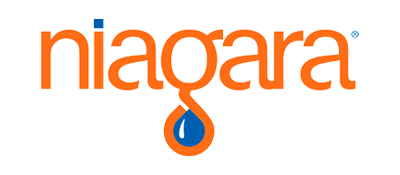

Marks

Diageo

Niagara Bottling

Walmart

PepsiCo logo

McDonald's

Unilever

Monin

Hello Fresh
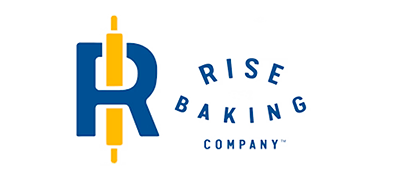
Rise Baking

Rockwool

Canadian Tire

SportChek
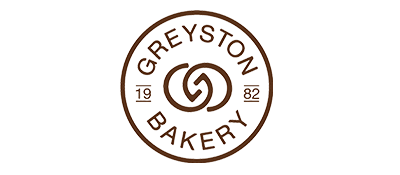
Greyston Bakery

Bell
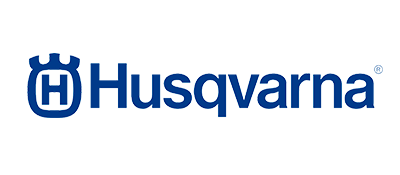
Husqvarna

Home Hardware
